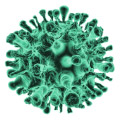Weight loss isn’t just about reducing your food intake; it’s about making smart dietary choices. Nutrition labels are like the language behind food, providing insight into true nutritional information and helping you avoid consuming hidden sugars and fats. Mastering this “decoding” skill will help you navigate shopping with ease and steadily move toward your ideal weight.
Why Nutrition Labels Are Crucial
Nutrition labels can help you:
- Understand serving sizes
- Accurately calculate calories and the three major nutrients
- Avoid hidden sugars, unhealthy fats, and additives
- Choose healthier foods that are better suited for weight loss
Step-by-Step: How to Read Nutrition Labels
1. Look at the “Serving Size” First
Nutrition values on labels are based on a specific serving size. A common misconception is overlooking the difference between “per serving” and “per package.”
For example, a whole bar of chocolate contains far more calories than a single serving. Always verify your actual intake before purchasing.
2. Focus on Calories
The key formula for weight loss is “energy in < energy out.”
- Low-calorie foods: Less than 150 calories per 100 grams (such as most fruits and vegetables, lean meats)
- Medium-calorie foods: 150-300 calories (whole grains, starchy vegetables, low-fat meats)
- High-calorie foods: Over 300 calories (fatty meats, some cheeses, and processed snacks)
Choosing foods with high nutrient density and low calories helps maintain a sense of fullness.
3. Identify Fat Composition
- It’s best to keep total fat below 10 grams per 100 grams.
- The lower the saturated fat, the better, ideally less than 3 grams.
Healthy fats, such as unsaturated fats found in olive oil and nuts, are beneficial, but should still be consumed in moderation.
4. Identify Sugar Traps
Less than 5 grams per 100 grams is ideal; anything over 15 grams is considered high in sugar and should be avoided.
Common hidden sugars include sucrose, glucose, fructose, maltose, and various syrups.
Products with high sugar content listed as top ingredients should be viewed with caution.
5. Focus on Dietary Fiber
Fiber intake not only increases satiety but also aids digestion and stabilizes blood sugar.
A fiber content of 3 grams or more per serving is recommended, with high-fiber foods being preferred.
Whole grains, fruits, and vegetables, and legumes are excellent sources of fiber.

6. Protein Content
Protein helps maintain muscle mass and maintain satiety.
High-protein foods containing more than 10 grams per 100 grams are a good choice.
7. Control Sodium Intake
High-salt foods can easily lead to edema and increase blood pressure.
Choose products with less than 120 mg of sodium per 100 ml to reduce your sodium burden.
Shopping Guide: How to Choose Healthy Foods
- Compare similar products, such as breakfast cereals, breads, and snacks, based on per 100-gram data.
- Choose low-calorie, high-protein, and high-fiber options, and avoid products high in sugar, saturated fat, and salt.
- Pay attention to portion size information to avoid consuming too many calories due to over-sized portions.
Key Tips Summary
- Nutrition information is per 100 grams when comparing nutrition facts
- Favor low-calorie, high-protein, and high-fiber foods
- Avoid hidden sugars, excess saturated fat, and sodium
- Carefully review portion size information to accurately track your intake.
By expertly interpreting nutrition labels, we can stay on track for a healthier diet and achieve more sustainable weight loss.
For personalized nutrition guidance or customized meal plans, the help of a professional nutritionist is invaluable. Master label wisdom and take control of your health!






